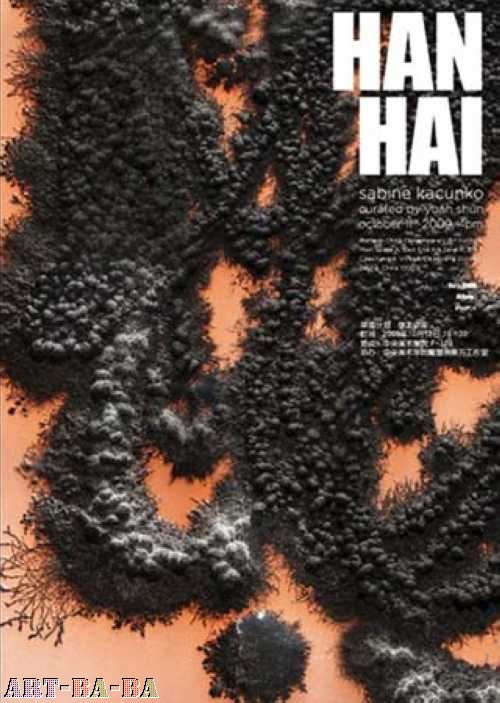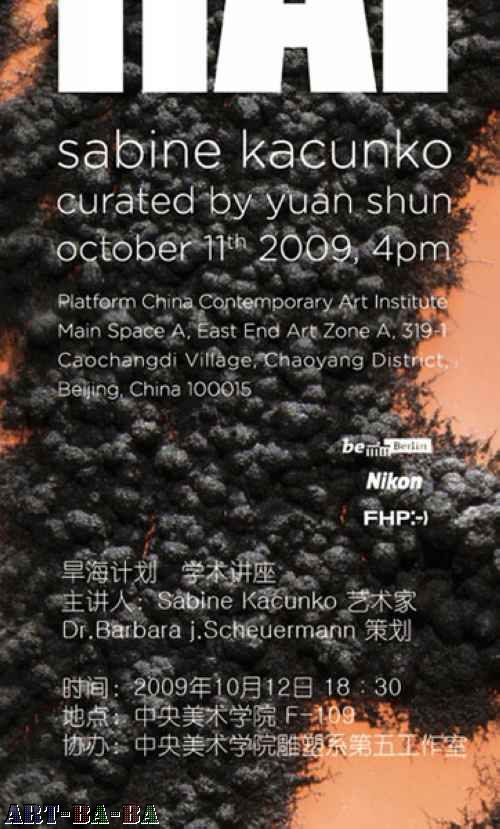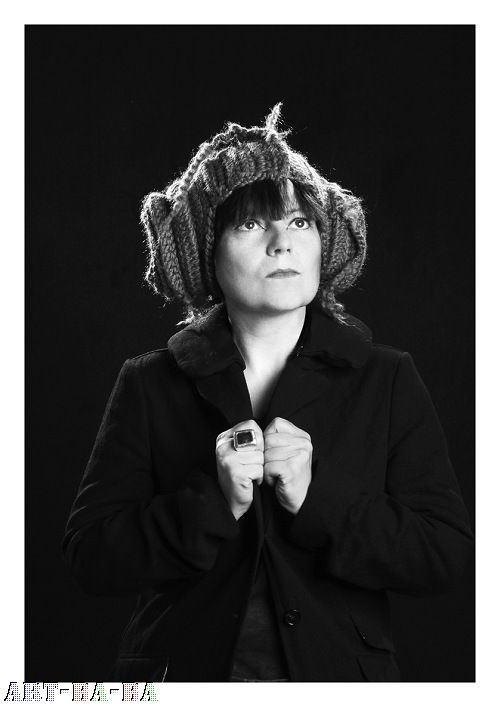【站台中国】- 德国艺术家Sabine Kacunko的交互式媒介项目 - 旱海
发起人:platformchina 回复数:5
浏览数:2129
最后更新:2009/10/09 11:29:59 by guest


Sabine Kacunko
旱海
交互式媒介项目
策展人:袁顺
展览开幕:2009.10.11 周日 4pm
地点:站台中国当代艺术机构B空间
站台中国将于10月11日推出德国艺术家Sabine Kacunko的交互式媒介项目 - 旱海,此次展览仅维持一天,希望您届时参加。
项目背景: 以互动多媒体表现的“旱海”项目基于中国戈壁沙滩的人为造成沙漠化。这是德国艺术家Sabine Kacunko的艺术小组BOOTSCHAFT的全球性多媒体项目。她与一些国际科学家合作,用互动多媒体表现“旱海”概念的首要任务是以回应21世纪创造经济增长和环境可持续发展之间的挑战。 在全球许多国家,人们目击了一部分由人为造成沙漠化的过程。 艺术家关注的是公开对象或公共场所的特别文化或生态学的重要性。
“旱海”使用一个摄影显微镜作为互动多媒体设施的参考资料来源,沙漠岩漆(地质学名词,戈壁滩上的砾石,白天受炽热的阳光不停地照射,连砾石裂缝间含有的一点水分也无法保存,但被水分溶解的一些铁锰之类的矿物质,却凝聚在砾石表面上,形成一层乌黑发亮的硬壳,使戈壁滩上一片漆黑,人们通常称它为“沙漠岩漆”)的微观数字图象(显微镜下)将被生成在展厅的墙壁、屏幕上。当观众进入空间,沙漠岩漆的表面上就会出现黄色沙漠的图像,当越来越多的观众进入,越来越多的黄色沙漠图像将蔓延在屏幕上,直到所有的图像全部变成沙漠。
这个项目想要表现的是健康的生态发展和经济发展之间的平衡关系,通过象征性地移植“中国的戈壁沙滩的消失”,表现中国从农村到城市的环境变化。表明成功和失败的条件取决于那些与环境有意识互动的人的活动。沙漠荒芜的不断扩大, 观众的参与在这个过程中起到了很大作用。不禁让我们意识到,当我们在伤害自然的同时,自然也会伤害我们。

Sabine Kacunko
Dry Sea
Interactive media performance
Curator: Yuan Shun
Opening Date:2009.10.11 4pm
Venue:Platform China Contemporary Art Institute Space B
Platform China Contemporary Art Institute is pleased to hold Sabine Kacunko interactive media performance – Dry Sea.
Artist Sabine Kacunko took the poetic Chinese name for Ghobi desert “han-hai” (“Dry Sea”), as title for her new work which she specially developed for Platform China in Beijing. In her multilayer spatial installation the artist touches central sociopolitial and environmental questions and leads directly into existential considerations about the relationship between humans and nature which today is characterized by an increasing tension.
For “Dry Sea” Sabine Kacunko, in cooperation with international scientists, created image files of experimental desert varnish production attempts using a microscope. These image files are the source material for the interactive spatial installation “Dry Sea”. The microcosm of desert varnish is rear-projected on a screen whose proportions in the exhibition space remind of a wall. In the beginning of the performance of “Dry Sea” the greyish desert varnish is visible as “all-over” on the screen. A camera records all visitors as long as they move behind the projection wall. This information is forwarded to a computer on which the images of the desert varnish are saved. The image files are controlled by a software which was specially developed for this installation. The more people enter the room, the more fragemented the image on the screen gets, the patina regresses, until it, resp. its image, has completely disappeared. The references and thought-provoking impulses the work provides reflect the sensitive ecological and economic balance which holds the world we live in and which is to maintain resp. to rebuild. With her visually impressive interactive installation “Dry Sea” Sabine Kacunko does not only visualize the mystic beauty of natural processes but also the efficacy of human actions.
Sabine Kacunko (born in Kassel, Germany, lives and works in Berlin) has been focussing on the complex relationship between human and nature for a long time now. Her photographs of plants, minerals and animals are created exclusively with natural light and in black-white. Seemingly familiar things unfold an unexpected power and provide space for numerous associations which are subtly guided by the artist’s attempt to fathom the world and our relation to it. Since 2005, Sabine Kacunko has been pursuiting the multimedia-based global project BOOTSCHAFT in public spaces. By using complex artistic set-ups BOOTSCHAFT draws attention to objects with a special cultural and ecological background and thus to essential sociopolitical and environmental contexts. For more information please see www.sabinekacunko.de.
(text by Barbara J. Scheuermann)
Desert varnish is a product of rock weathering or biopitting and functions like a multilayered finely interwoven carpet of microscopic scale. The protective pigments of desert organisms absorb solar radiation in a different way from pure rock and thus help to equilibrate the albedo and hereby stabilise climatic conditions. If it were possible to artificially initiate the biofilm growth of desert varnish one could possibly counteract desertification to some extent.
The project is supported by the mayor of Berlin, chancellery of the Berlin senate, cultural affairs. Freie Universität, Berlin, Charité Berlin. Nikon Germany, Panasonic Germany.
The exhibition is accompanied by a lecture by Sabine Kacunko and Barbara J. Scheuermann (independent curator, Berlin) at The Central Academy of Fine Arts (CAFA), Beijing, Huajiadi Nanjiestr. 8, Chaoyang District, 100102 Beijing VR China, on October 12th 2009, 6:30pm.
中国当代艺术的发现者、观察者和参与者
站台 中国 我一直不看好.装比还装不好.
站台中国做得都是实验性很强的展览,还是非常不错的!

项目背景: 以互动多媒体表现的“旱海”项目基于中国戈壁沙滩的人为造成沙漠化。这是德国艺术家Sabine Kacunko的艺术小组BOOTSCHAFT的全球性多媒体项目。她与一些国际科学家合作,用互动多媒体表现“旱海”概念的首要任务是以回应21世纪创造经济增长和环境可持续发展之间的挑战。 在全球许多国家,人们目击了一部分由人为造成沙漠化的过程。 艺术家关注的是公开对象或公共场所的特别文化或生态学的重要性。
“旱海”使用一个摄影显微镜作为互动多媒体设施的参考资料来源,沙漠岩漆(地质学名词,戈壁滩上的砾石,白天受炽热的阳光不停地照射,连砾石裂缝间含有的一点水分也无法保存,但被水分溶解的一些铁锰之类的矿物质,却凝聚在砾石表面上,形成一层乌黑发亮的硬壳,使戈壁滩上一片漆黑,人们通常称它为“沙漠岩漆”)的微观数字图象(显微镜下)将被生成在展厅的墙壁、屏幕上。当观众进入空间,沙漠岩漆的表面上就会出现黄色沙漠的图像,当越来越多的观众进入,越来越多的黄色沙漠图像将蔓延在屏幕上,直到所有的图像全部变成沙漠。
这个项目想要表现的是健康的生态发展和经济发展之间的平衡关系,通过象征性地移植“中国的戈壁沙滩的消失”,表现中国从农村到城市的环境变化。表明成功和失败的条件取决于那些与环境有意识互动的人的活动。沙漠荒芜的不断扩大, 观众的参与在这个过程中起到了很大作用。不禁让我们意识到,当我们在伤害自然的同时,自然也会伤害我们。


“旱海”使用一个摄影显微镜作为互动多媒体设施的参考资料来源,沙漠岩漆(地质学名词,戈壁滩上的砾石,白天受炽热的阳光不停地照射,连砾石裂缝间含有的一点水分也无法保存,但被水分溶解的一些铁锰之类的矿物质,却凝聚在砾石表面上,形成一层乌黑发亮的硬壳,使戈壁滩上一片漆黑,人们通常称它为“沙漠岩漆”)的微观数字图象(显微镜下)将被生成在展厅的墙壁、屏幕上。当观众进入空间,沙漠岩漆的表面上就会出现黄色沙漠的图像,当越来越多的观众进入,越来越多的黄色沙漠图像将蔓延在屏幕上,直到所有的图像全部变成沙漠。
这个项目想要表现的是健康的生态发展和经济发展之间的平衡关系,通过象征性地移植“中国的戈壁沙滩的消失”,表现中国从农村到城市的环境变化。表明成功和失败的条件取决于那些与环境有意识互动的人的活动。沙漠荒芜的不断扩大, 观众的参与在这个过程中起到了很大作用。不禁让我们意识到,当我们在伤害自然的同时,自然也会伤害我们。


